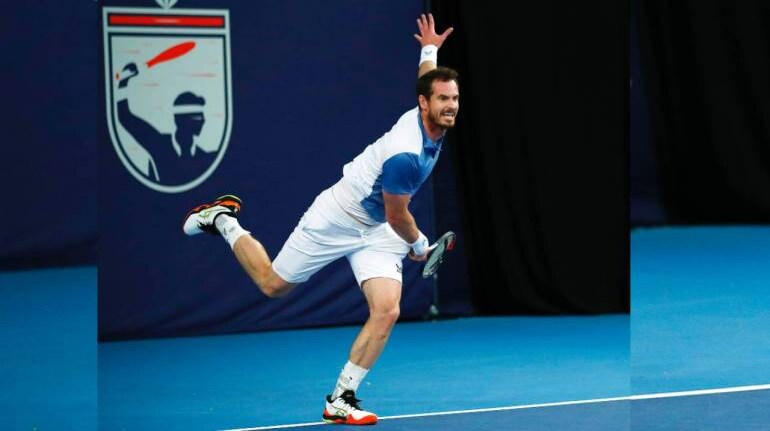



After spending 14 hours on court over three rounds, Andy Murray’s fight finally ended at the Australian Open on Saturday. But not after the 35-year-old Scotsman had rolled the clock back to a time when he was among the best players in the world.
At the ongoing season’s first Grand Slam, while the spotlight trained on Novak Djokovic, returning to the tournament after being unceremoniously deported last year and on Rafael Nadal, the defending champion, Murray was hardly the player to watch — except when the draws came out.
Matteo Berrettini, the 2021 Wimbledon finalist and 13th seed in Melbourne, drew the short end of the stick in getting Murray, a three-time Grand Slam champion in the first round. While Murray has not won an ATP title since 2019, almost retired from the game before returning to the sport after a surgery that gave him a metal hip and is ranked No. 66 in the world, he still had the experience and skill to beat the best — on his day.
After four hours and 49 minutes on court, Murray beat Berrettini 6-3, 6-3, 4-6, 6-7, 7-6 in the first round. The second round match was longer — five hours and 45 minutes to beat Australian Thanasi Kokkinakis 4-6, 6-7, 7-6, 6-3, 7-5. The match ended past four in the morning, just a couple of hours before daybreak, a gruelling session on court for the senior pro.
“It was unbelievable I managed to turn that around,” Murray said after the match. “I don’t know how I managed to get through it. I did start playing better as the match went on, but yeah, I have a big heart. I now am outright the most wins coming from two-sets-to-love down, so I have done it before. I have experience of it. I just rely on that experience and drive. That fight and love for the game and competing and my respect for this event and the competition and that is why I kept going.”
Murray (11) has the most comebacks from being two sets down among active players, with Fabio Fognini at 10.
It was the first time Murray had made it to the third round of this Grand Slam since 2017, but the hours spent on court, late in the night, were bound to take their toll. Three hours and 29 minutes of the third round ended in a defeat to Roberto Bautista Agut 1-6, 7-6, 3-6, 4-6 on Saturday.
In 2019, it was Bautista Agut who had beaten Murray in the first round of the Australian Open, in what was at the point being speculated as being Murray’s last match on tour.
In 2018 and 2019, Murray underwent extensive surgeries on his hips, the result of years of grind in a physically taxing sport. He had skipped the second half of 2017 due to the hip injury and returned only 11 months later in mid-2018 by which time his ranking had dropped to a career low of over 800. He missed almost half of 2019 due to another hip surgery, but won his last ATP title at Antwerp that year.
But from a low ranking in the 500s in mid-late 2019, he had come into the top 50s by mid-2022. It’s a remarkable return to top-level tennis for Murray, who had tearfully declared just a few years ago that his playing days were over. But top-level sportspeople sometimes find it difficult to give up — it’s just not a part of their DNA. They see the glass as half full, reason why Murray believed he still had some tennis left in him and he could not just quit without trying.
In late 2019, Murray’s long and arduous road to recovery from the injury was chronicled in Olivia Cappuccini-directed documentary film Andy Murray: Resurfacing. The film was a tribute to the former world number one’s determination and his passion for tennis, which shows clearly now with the latest results.
The group of four, that dominated men’s tennis for a decade and half, now lies decimated. Murray was the first to fall off, with injury that threatened to end his career. Roger Federer retired last year. Nadal, after an impressive 2022, has lost seven of his last nine single matches and limped out of the Australian Open a few days ago. Djokovic is the only one going strong, despite last year’s obstacles.
Murray’s flourish at the Australian Open may not be significant beyond the tournament. Yet, he did beat the world No. 14, 26 year-old Berrettini, local favourite 26-year-old Kokkinakis and took a set off No. 25 Bautista Agut. Against an easier draw, he could go farther, but that will become evident only as the year progresses. He may have the mental strength to deal with the best, but his body needs to hold up through two weeks of any Grand Slam.
Five hours after his match against Kokkinakis ended, Murray was back at the Melbourne Park, showing his intent. “I saw him today before my match,” The Guardian reported the No. 3 seed Stefanos Tsitsipas as saying. “I was thinking to myself: ‘What is he doing here? He should be in bed’.”
That’s the kind of will power champions have, to take their game beyond what their body would allow.
Discover the latest Business News, Sensex, and Nifty updates. Obtain Personal Finance insights, tax queries, and expert opinions on Moneycontrol or download the Moneycontrol App to stay updated!
Find the best of Al News in one place, specially curated for you every weekend.
Stay on top of the latest tech trends and biggest startup news.